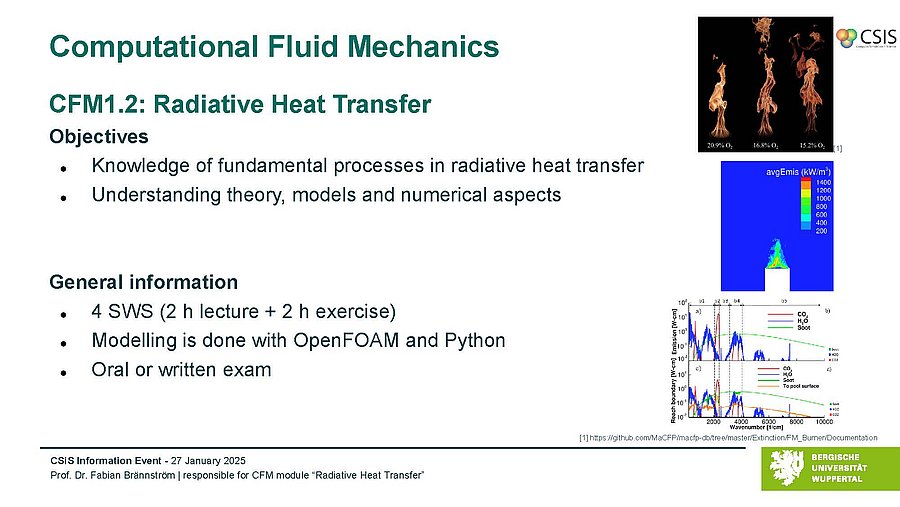

Cellular automata, multi-particle models, computational fluid dynamics, High Performance Computing. Close cooperation with the Research Centre FZ Jülich, Institute for Advanced Simulation (IAS), Civil Safety Research (IAS-7), Division Civil Security and Traffic, for simulation of pedestrian dynamics and fire. Master thesis in cooperation with industries are offered.
MODULE COMPONENTS:
CFM1.1: Computational Fluid Dynamics (obligatory)
CFM1.2: Radiative Heat Transfer (obligatory)
CFM2: Pedestrian Dynamics (elective)
How can we understand the properties of a crowd and predict its dynamics in closed and open spaces? This lecture addresses this question that weaves together three streams: development of operative models, investigation of route choice models, and software engineering. In this lecture, we aim at exploring several interrelated topics that fall under "mathematical modeling of pedestrian dynamics.":
- Identification and analysis of both micro and macro factors that affect pedestrian movement in real-world application scenarios.
- Exploiting various modeling techniques to replicate and simulate crowd movement features, reaching from physical-driven modeling designed to understand key characteristics of crowd movement to data-driven models aiming at predicting the outcome of evacuation processes. Investigation of many route choice strategies and their influence on the overall evacuation time from a building.
In the lecture, we simulate applied scenarios with the software JuPedSim (Jülich Pedestrian Simulator) https://www.jupedsim.org/ . Exemplary simulations can be found here:
e.g.Simulation1 - e.g.Simulation2 - e.g.Simulation3
CFM3: Smooth Particle Hydrodynamics (elective)
CFM4: Free Surface Water Flow (elective)
CFM5: Fire Simulation (elective)
